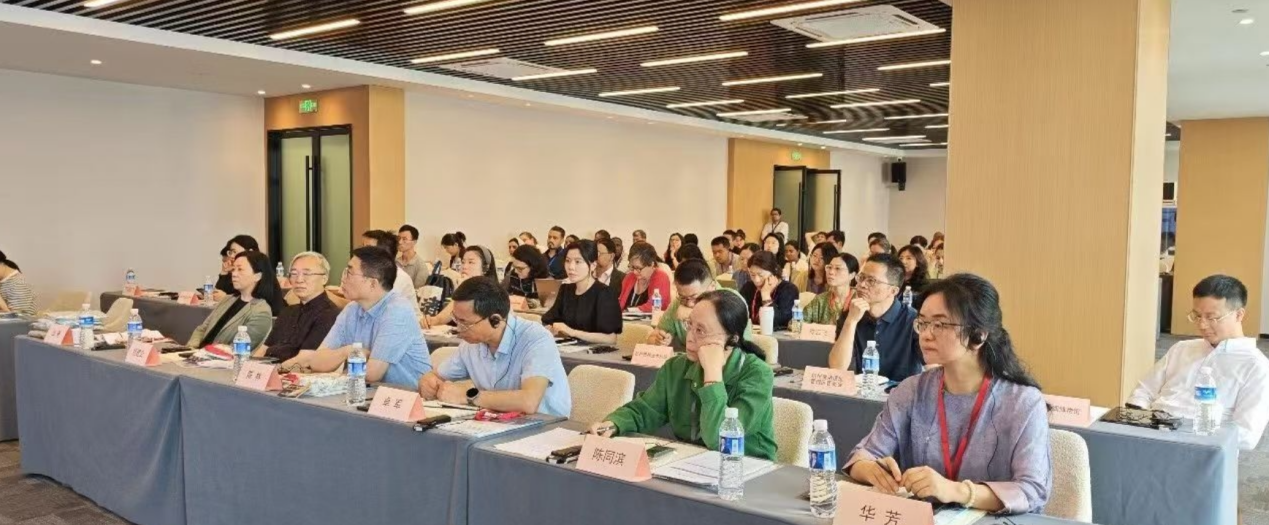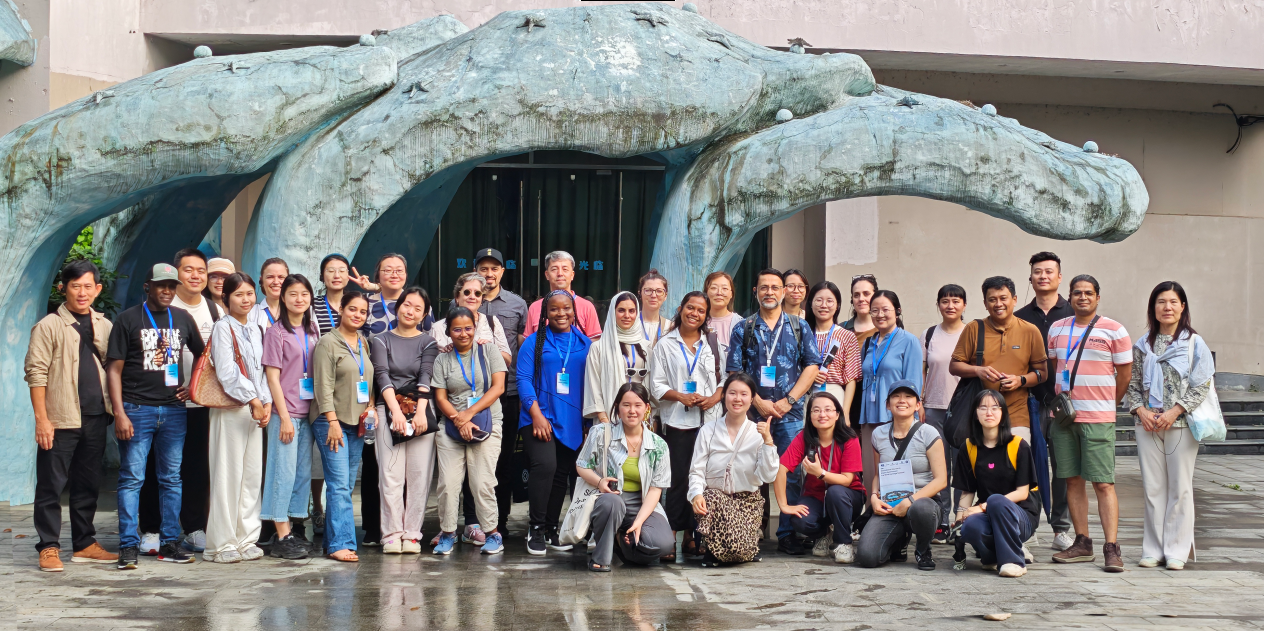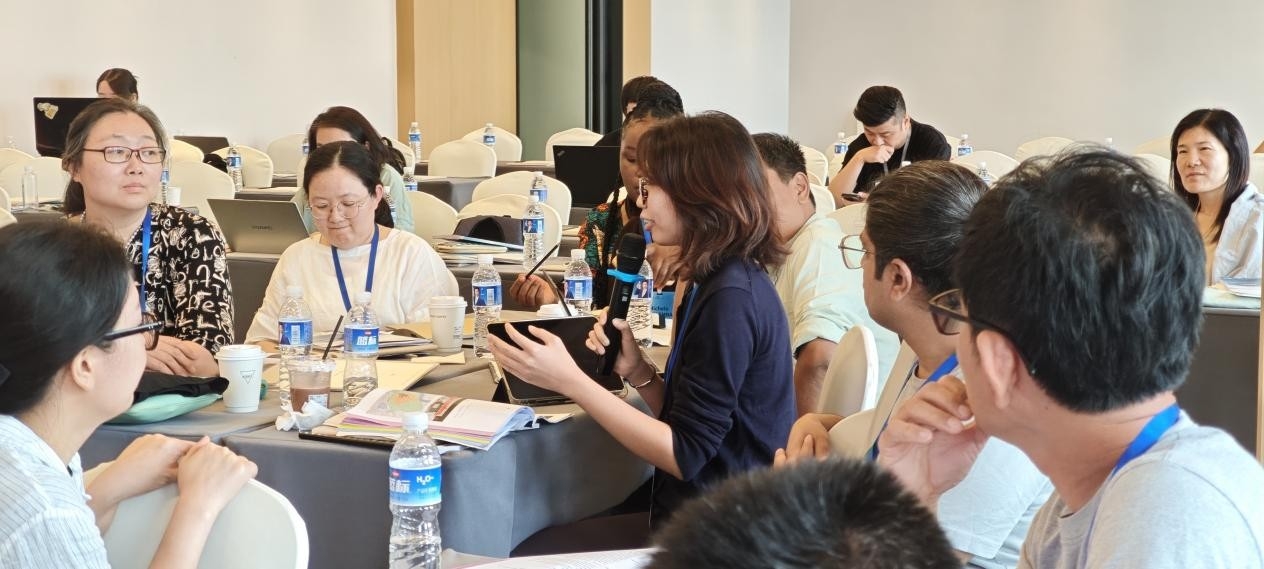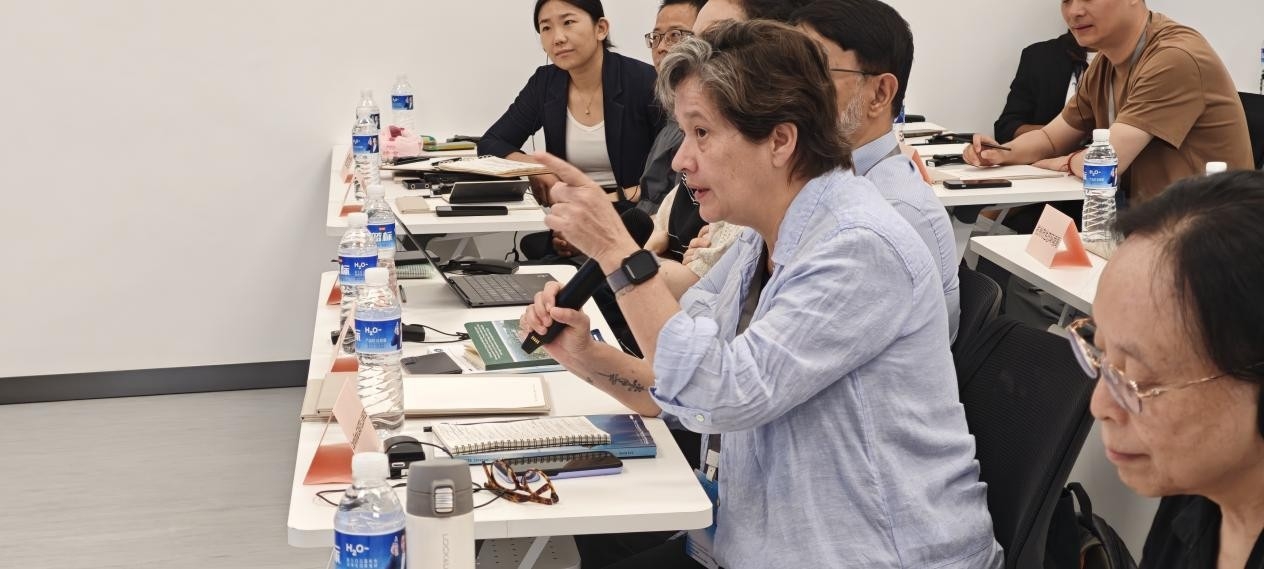| News | The International Training Workshop on Impact Assessments in a World Heritage Context successfully concludes in Hangzhou |
| Author:WHITR-AP Shanghai PublishDate:2025-06-09 Hits:2028 |
From 19 to 23 May 2025, the International Training Workshop on Impact Assessments in a World Heritage Context (IAWH) was successfully held at the West Lake World Heritage Site in Hangzhou, China. The International Course on Impact Assessment in a World Heritage Context was organised by WHITR-AP Shanghai and the International Centre for the Study of the Preservation and Restoration of Cultural Property (hereinafter referred to as the “ICCROM”) in collaboration with the Management Committee of Hangzhou West Lake Scenic Area, Tongji University, the Shanghai Tongji Urban Planning & Design Institute Co. Ltd and the Zhejiang Provincial Association for the Protection and Utilization of Cultural Relics. Nearly 100 representatives attended the meeting, including those from the Zhejiang Provincial Cultural Heritage Administration, the Zhejiang Association for the Protection and Utilization of Cultural Heritage, Hangzhou Municipal Development and Reform Commission, Municipal Construction Commission, Municipal Bureau of Ecology and Environment, Municipal Bureau of Planning and Natural Resources, Municipal Bureau of Forestry and Water Resources, Municipal Bureau of Culture, Radio, Television and Tourism, the Liangzhu Management Committee, the Hangzhou Section of the Grand Canal Conservation and Management Centre, and affiliated institutions of the West Lake Scenic Area Administrative Committee.
On-site at the 2025 International Training on Impact Assessments in a World Heritage Context
The training course covered two main modules: The World Heritage management system and the methods and procedures of impact assessment. It was delivered in a hybrid format, combining an online course on the Guidance, which began in March, with a five-day in-person session held from 19 to 23 May at the West Lake World Heritage site in Hangzhou. The in-person component included one day of lectures and presentations, two days of on-site field visits, and two days of team-based work, featuring intensive interaction and exchanges focused on the practical assessment of hypothetical cases designed for educational purposes. Opening Ceremony: Exchange and Consensus in an International Context On the morning of 19 May, the training course officially commenced. The opening ceremony was moderated by Nicole Franceschini, Programme Officer of the World Heritage Leadership Programme at ICCROM. Opening remarks were delivered by Shao Yong, Director of WHITR-AP Shanghai; Chen Lin, Deputy Director of the Administrative Committee of the West Lake Scenic Area; and Yang Jianwu, President of the Zhejiang Association for the Protection and Utilisation of Cultural Heritage. They welcomed the participants and introduced the background and collaborative vision of the training programme. Aruna Gujral, Director-General of ICCROM, delivered a video message, highlighting how impact assessment methodologies and implementation have become a vital tool for achieving sustainable conservation, balanced development, and community engagement, and she commended the exemplary role of West Lake in heritage conservation and management practice. World Heritage Management Systems: International Trends and Local Progress Following the opening ceremony, three experts delivered keynote speeches. Li Hong, Project Director of WHITR-AP Shanghai, began with an overview of China’s World Heritage impact assessment management system. Next, Chen Tongbin, Senior Chief Planner at China Architecture Design and Research Institute Co., Ltd., and Honorary Director of the Institute of Architectural History at China Architecture Design and Research Institute, gave a keynote speech on “The Study of Heritage Value and The Strategy of Conservation & Management about West Lake Cultural Landscape of Hangzhou.” She reviewed the World Heritage nomination process of the West Lake Cultural Landscape and provided a detailed interpretation of its values and carriers based on the newly revised protection and management plan. Finally, Tong Hanbing, Chief of Heritage Affairs Unit at the Monitoring and Management Centre of Hangzhou West Lake World Cultural Heritage, presented an exploration of the application of impact assessments in project approvals at the West Lake heritage World Heritage property, referencing the draft “Implementation Opinions on World Heritage Impact Assessment of West Lake, Hangzhou” issued for public consultation in January 2025. On the afternoon of 19 May, participants from the Republic of Korea, Zambia, the United Arab Emirates, and India gave thematic presentations on the World Heritage management systems in their respective countries. These presentations provided insights into the legislative frameworks, institutional responsibilities, community engagement, and practical experiences related to impact assessments, showcasing a wide range of policy approaches. Sungeun Kim (Republic of Korea) introduced Korea’s World Heritage management system and its HIA framework. She noted that Korea’s “Special Act on Conservation, Management and Utilisation of World Heritage” clearly defines the responsibilities of central and local governments, and in 2023, Heritage Impact Assessment was formally incorporated into legislation. Despite a well-structured system, challenges remain, including gaps in legal coordination, a lack of detailed procedural guidance, and a high proportion of privately-owned heritage sites, all of which call for more context-sensitive regulations. Michelo Mweemba (Zambia) outlined Zambia’s legal and procedural framework for impact assessments, highlighting the integration of multiple laws to protect both cultural and natural heritage. She emphasised that while the country’s assessment processes consider environmental, social, and heritage dimensions, weak monitoring mechanisms and insufficient follow-up hinder their effectiveness. Strengthening institutional integration and building robust data systems are critical to achieving sustainable development goals alongside heritage conservation. Belhassen Kinbi (United Arab Emirates) underscored the importance of heritage site management being rooted in sound legal, environmental, and urban planning systems. He discussed Cultural Sites of Al Ain (Hafit, Hili, Bidaa Bint Saud and Oases Areas) with both natural and cultural values, protected by a range of federal regulations. Current challenges include a lack of coordination among stakeholders and outdated planning frameworks. He called for the clarification of zoning policies and the integration of sustainable development and energy innovation concepts to enhance governance efficiency and public engagement. Sukanya Sharma (India) pointed out that South Asian countries face challenges including fragmented legal systems, limited inter-agency coordination, overwhelming tourism pressure, poor enforcement of existing plans and regulations, shortage of professional expertise, and low engagement from the public and cultural sectors. These issues have led to limited effectiveness in heritage protection. She emphasised the need to establish a unified and efficient governance framework to integrate conservation and development. Carolina Castellanos, the session moderator, concluded by comparing the assessment processes under different systems and encouraging participants to reflect on the strengths and challenges within their own national practices. Discussions on heritage management systems also aimed at identifying the intersections between management and impact assessments, to identify means to better streamline and optimise management processes and practices. 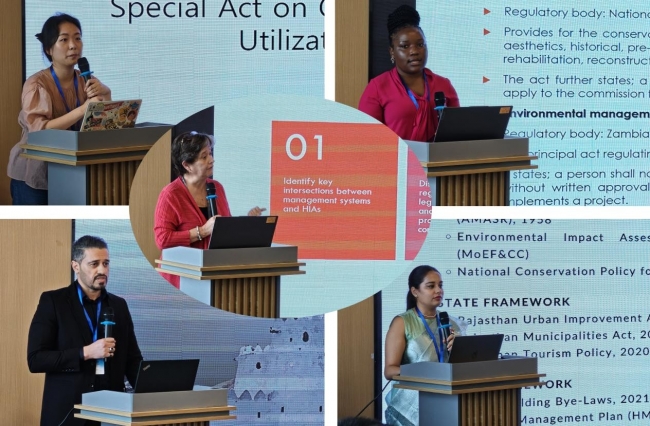 Course Session on World Heritage Management Systems
Impact Assessment Exercise: Starting from West Lake to explore heritage management Challenges
The training course was organised into four core modules: identification of values and attributes, screening, scoping, and impact assessment.
On 19 May, all participants, guided by local experts, engaged in an exercise to identify values and attributes based on the Statement of Outstanding Universal Value (OUV) of the West Lake World Heritage property. On 20 May, participants undertook field visits to the vicinity of the hypothetical proposed action project sites as well as to the West Lake Museum. These visits facilitated the development of a preliminary understanding of the West Lake heritage site and enabled the collection of critical information to support subsequent group work. 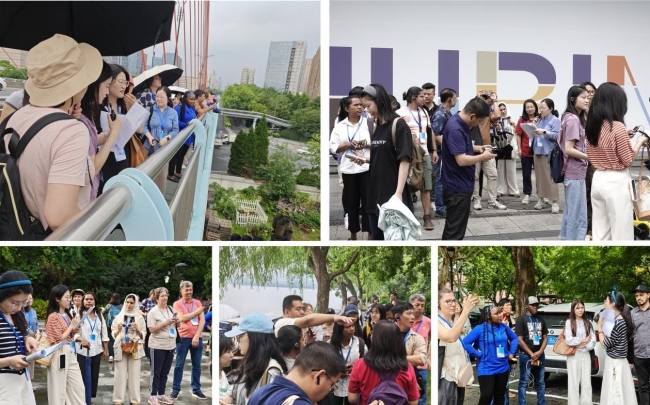
Site visit to the sites of the proposed actions
From 21 to 22 May, under the guidance of resource people, participants were divided into five groups to engage in intensive group work focused on the practical application of heritage impact assessment (HIA). The exercises centred on three key steps of the HIA process: screening, scoping, and assessment implementation. Group 1 examined the impacts of fashion events held within the heritage property, considering a balanced approach that promotes economic growth and cultural exchange while addressing potential effects on the environment, landscape, and local communities. 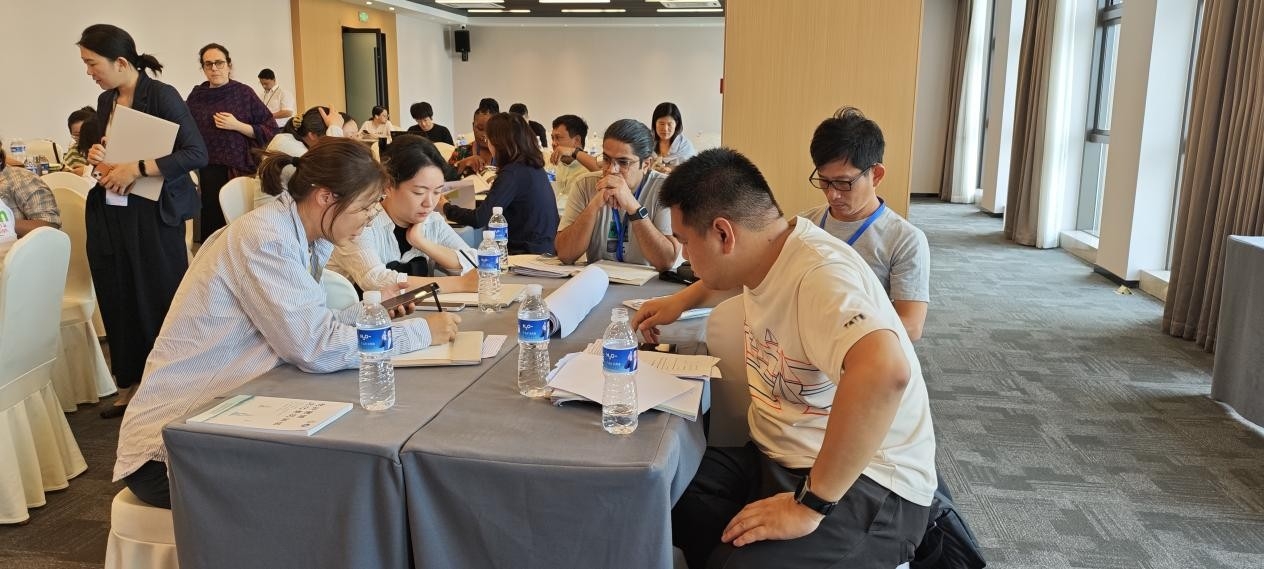 Group 2 examined the redevelopment of industrial heritage sites in the areas surrounding the World Heritage property. The group emphasized addressing community modernization needs and infrastructure improvements, advocating for a participatory approach to enhance local identity and social inclusiveness.
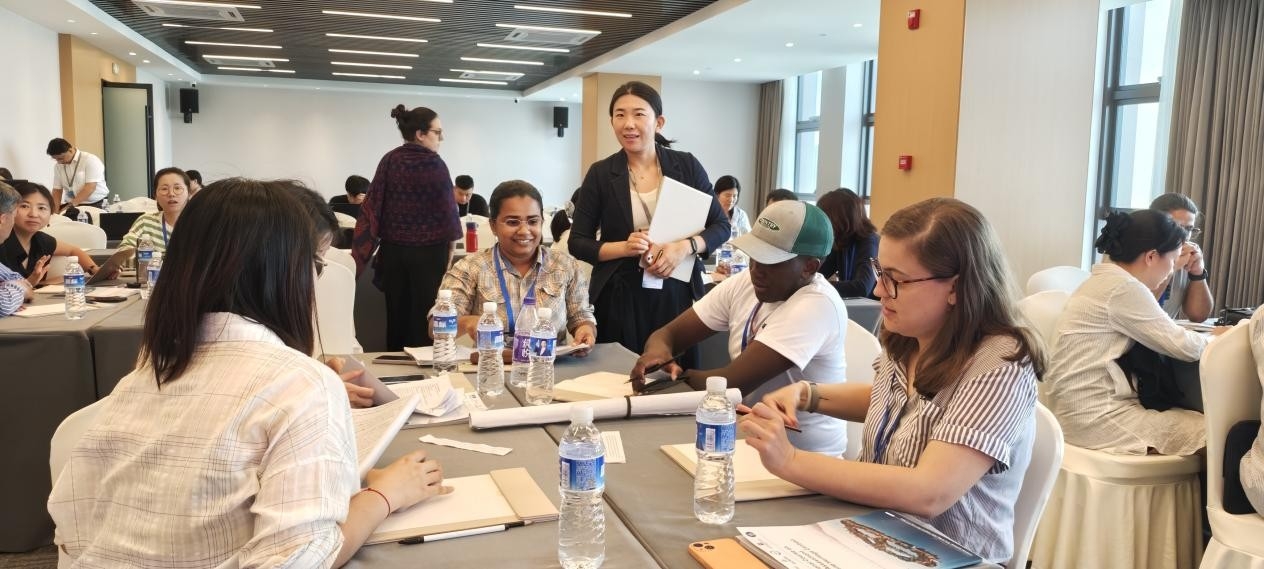
Group 3 focused on the optimization of public facilities such as restrooms and parking areas within the World Heritage property. The group explored the relationship between heritage management planning coordination and heritage impact assessment in the context of public facility improvement projects. 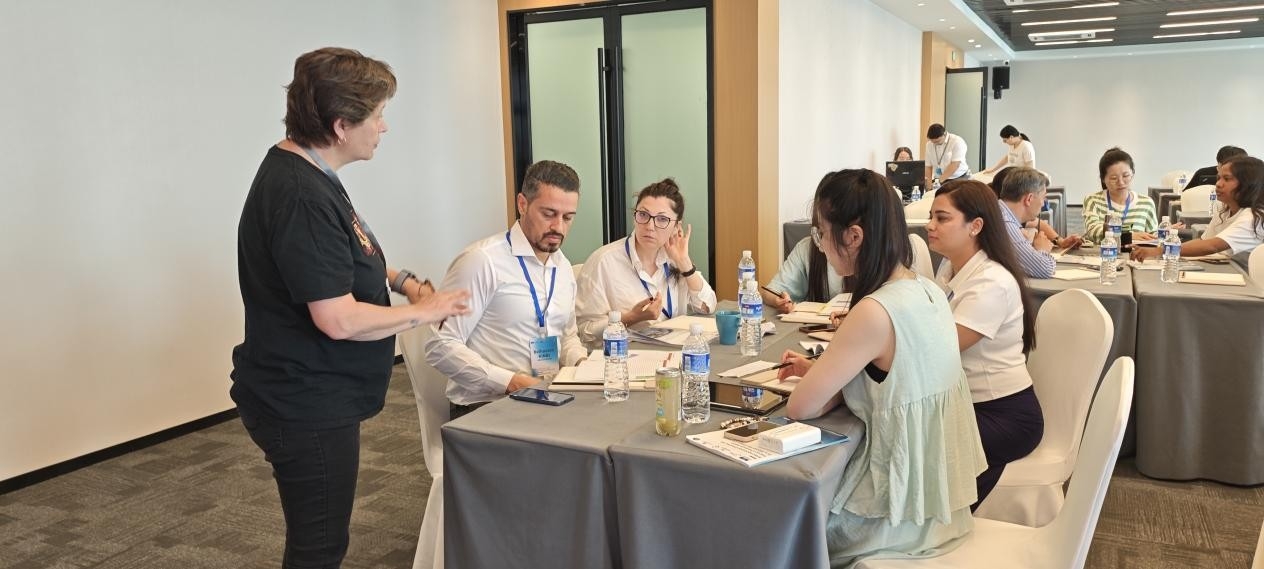 Group 4 addressed the redevelopment project of an underground shopping mall, highlighting the importance of the assessment process in considering relevant local regulations and policies concerning cultural heritage, construction, and technical standards.
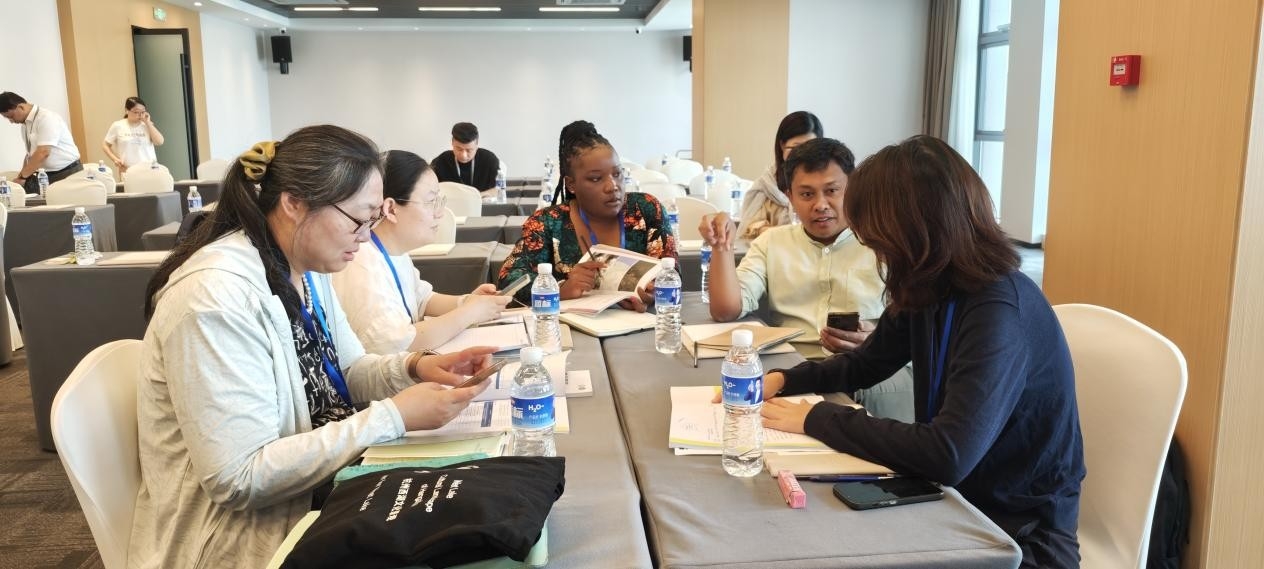
Group 5 focused on the renovation of a vacant aquarium within the heritage site into a public service facility, emphasising the adaptability of the redesign in terms of cultural significance, functionality, and landscape character. 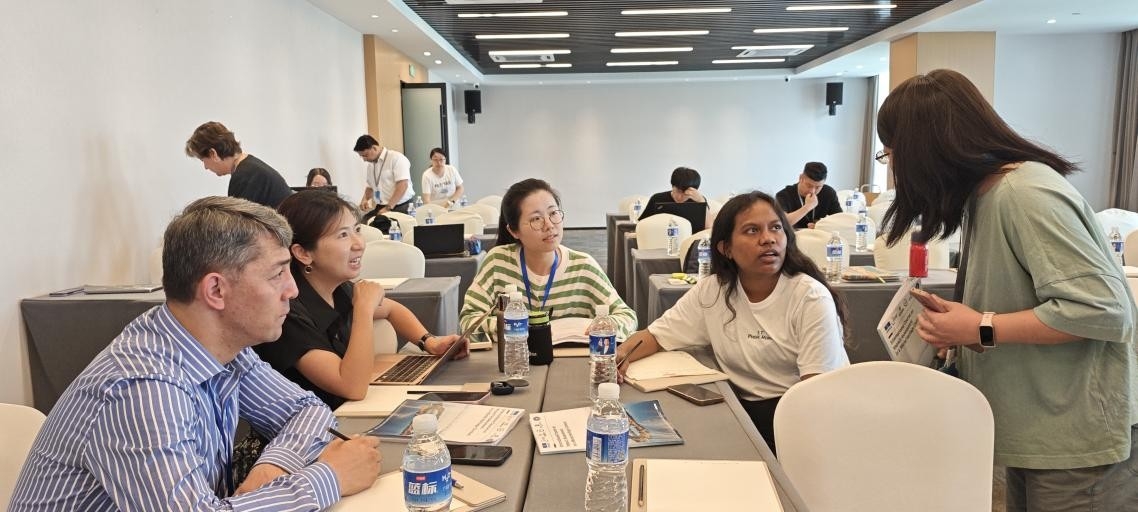
Subsequently, based on three distinct hypothetical proposals for the aquarium project, participants conducted scoping exercises and prepared heritage impact assessment scoping reports focused respectively on building renovation and refurbishment, revitalisation of unused land, and enhancement of regional vitality. On 22 May, each group returned to the West Lake site for supplementary field research. Following guidance from instructors on key considerations, groups refined their assessment priorities in accordance with the specific conditions of their respective cases.
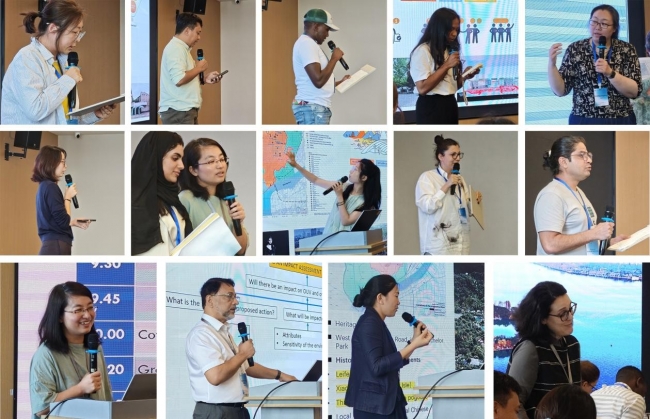 Portraits of speakers and discussion participants at the training
On 23 May, during the final presentation session, each group delivered comprehensive evaluation reports for the three proposed projects. The collective efforts of the participants resulted in detailed and well-organised reports as well as ongoing reflections, demonstrating a range of outcomes. Some participants effectively applied the assessment methodologies outlined in the Guidance, integrating local observations and further research to demonstrate a solid grasp of the evaluation process. Others expanded on this foundation by incorporating the institutional strengths of West Lake’s heritage management system into their analyses. Particularly noteworthy was the contribution of several participants who transcended the initial project parameters, adopting a pragmatic approach tailored to China’s national context and local characteristics, and offering a holistic reflection on heritage impact assessment tools through the lens of sustainable development. This culminated in a robust and insightful discussion among resource experts and participants regarding the future trajectory of heritage management in China within the World Heritage context.
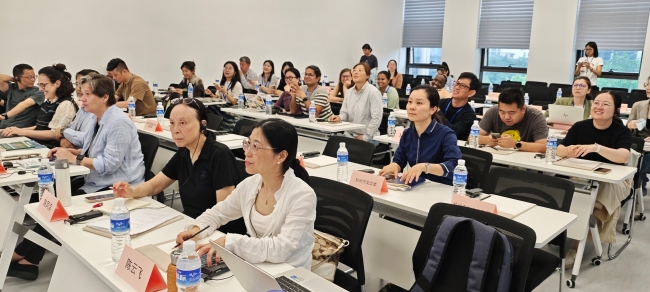 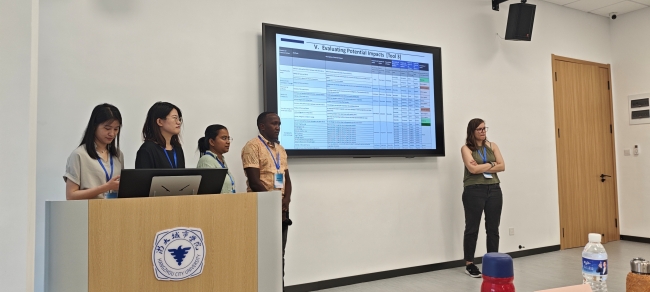 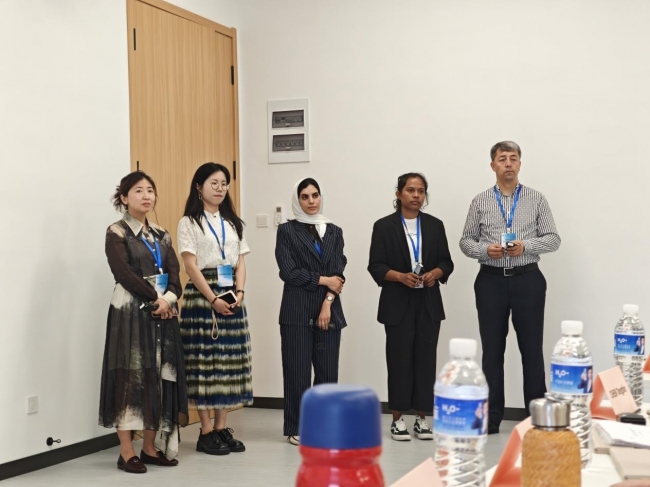 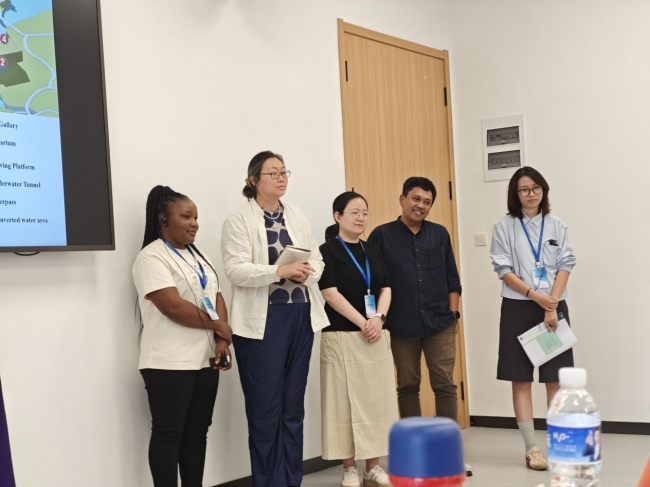 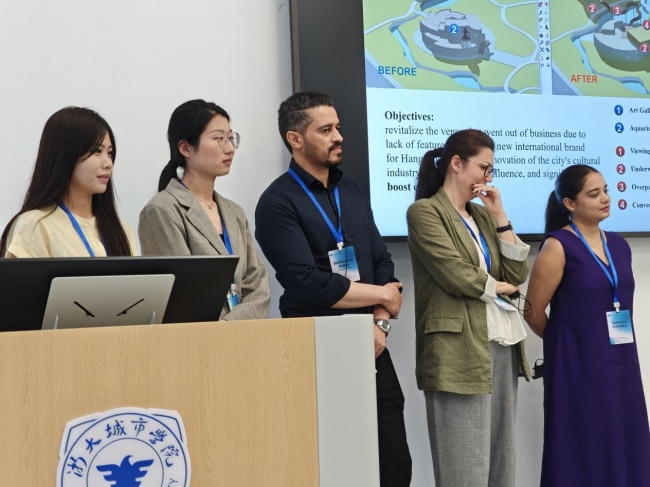 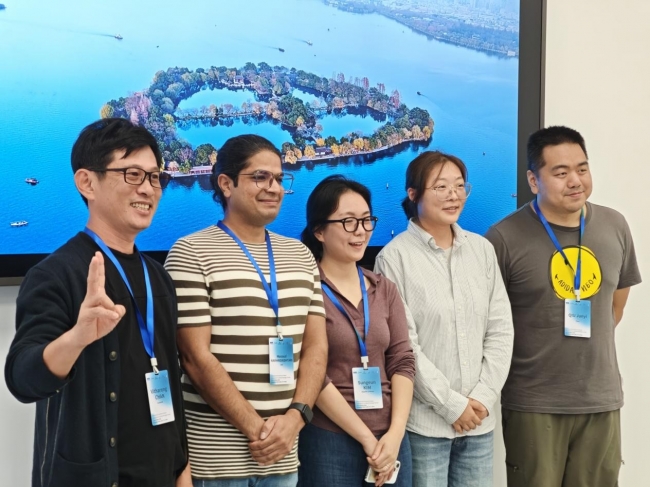 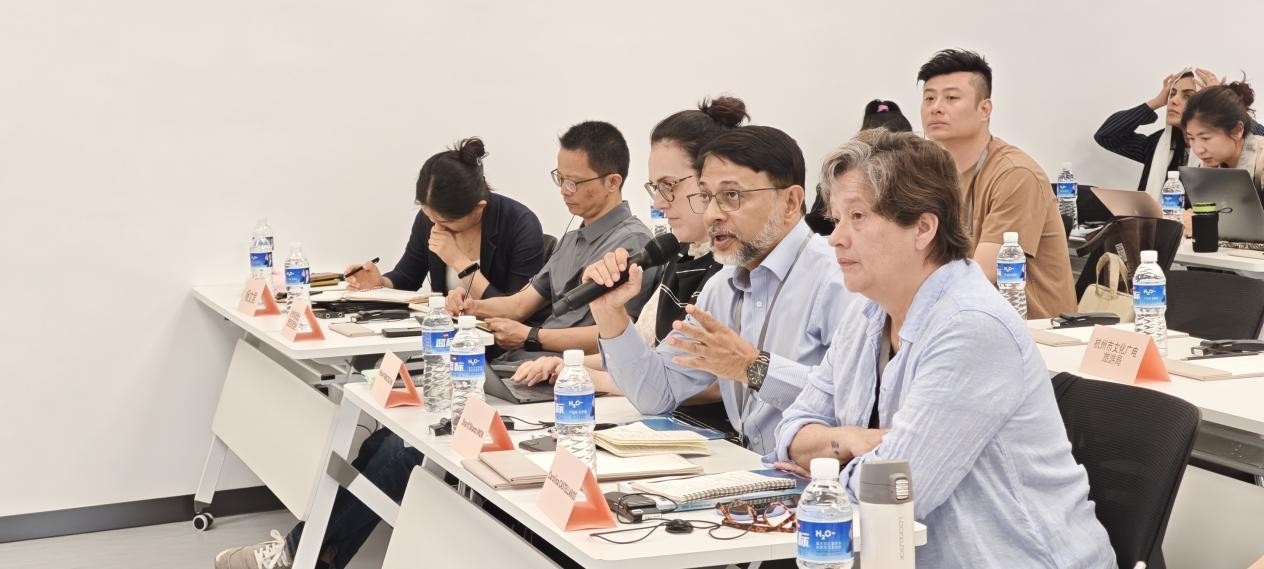
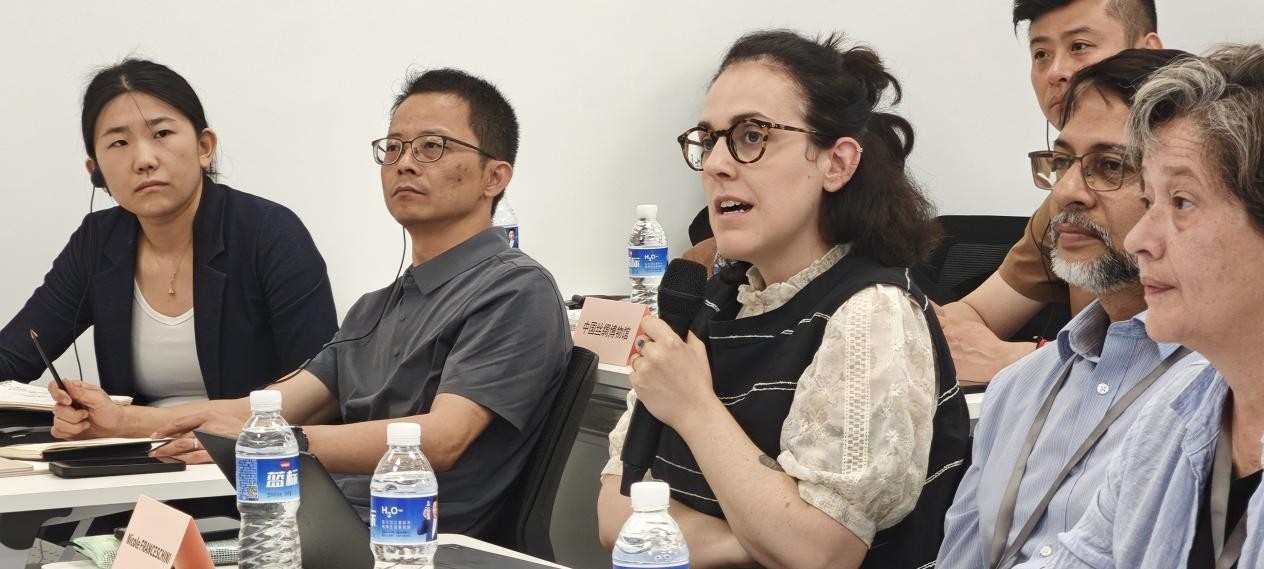
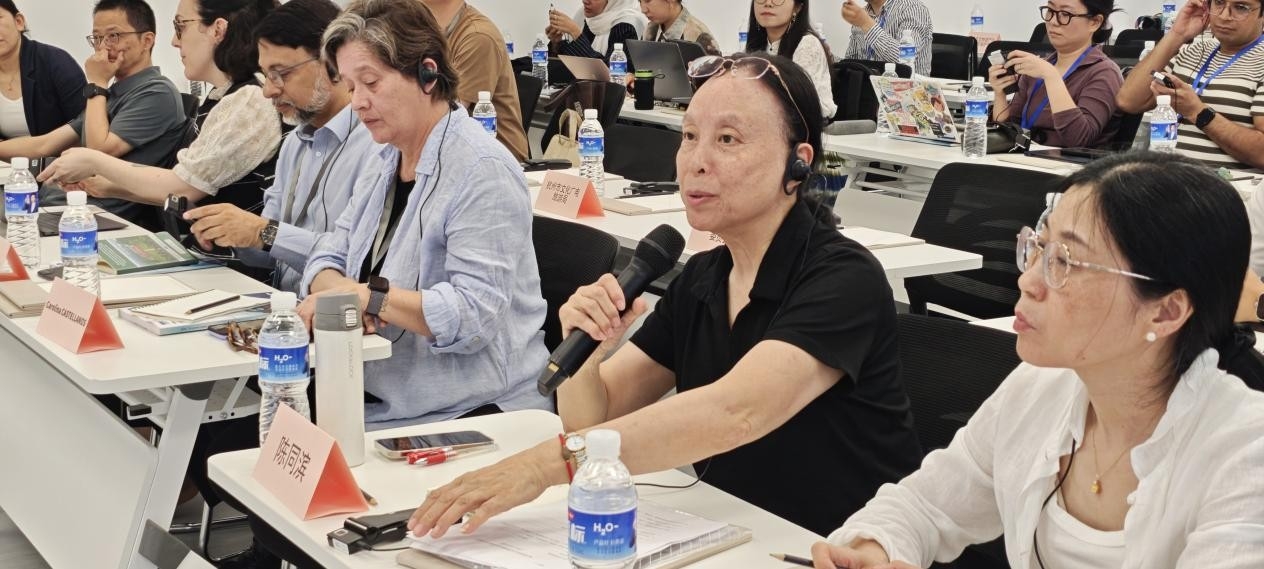
This training course was not only a journey for the enhancement of professional skills but also a vibrant platform for cross-cultural exchange. Hangzhou, as a World Heritage property that harmoniously integrates cultural and natural attributes that support its Outstanding Universal Value, once again played a significant role in advancing global heritage education and policy dialogue. The five-day open course exercises planted seeds of knowledge and inspiration in every participant, while also highlighting further avenues for the evolution of heritage impact assessment tools. Looking ahead, WHITR-AP Shanghai will continue to collaborate with partners to promote the dissemination and exchange of policy tools, bridging global and local knowledge and experience, and contributing to the sustainable management of World Heritage properties at a higher level. |
- Preview | WH Properties Assessment: An Overview Across The World
- Preview | Heritage Educational Landscape Exhibition Opening Soon
- Preview|1st UHC-HEI International Conference to open in Shanghai
- Suzhou Gardens Conservation Practices Featured at UNESCO MONDIACULT 2025 Online Side Event — Chinese Wisdom Contributes Solutions for Global Cultural Sustainability
- Call for Participation | 2025 HeritAP Annual Meeting
- NEWS | WHITR-AP Engages in 2025 ICOMOS University Forum
Copyright © 2009-2012 World Heritage Institute of Training and Research-Asia and Pacific (shanghai)


